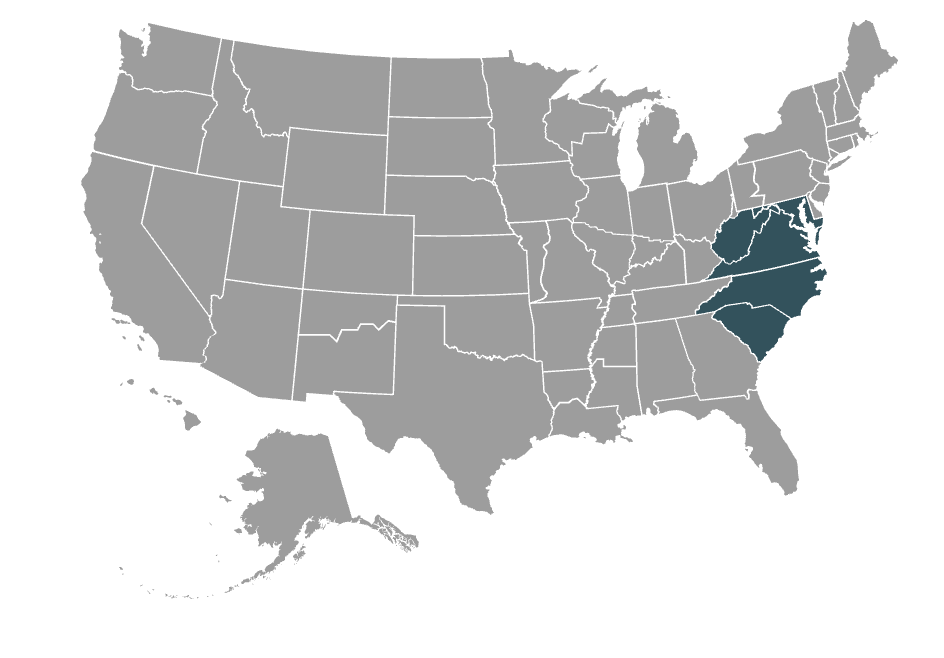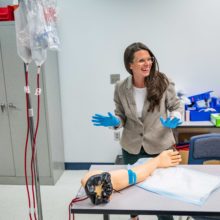
|
|
Community colleges have long been heralded as workforce engines, playing a vital role in economic development. But the ways in which success is measured among these two-year institutions is problematic, community college leaders say.
Since 2019, the Federal Reserve Bank of Richmond (Richmond Fed) has worked to create a tool that would measure community college success across the Fifth District (Maryland, Virginia, North Carolina, South Carolina, most of West Virginia, and the District of Columbia).

The Integrated Postsecondary Education Data System (IPEDS) is the primary data system used to measure postsecondary outcomes in the United States. While consistent in standardized metrics, IPEDS was designed for four-year institutions and does not account for how community colleges operate and their diverse student populations.
IPEDS metrics and community colleges: IPEDS does not include success rates of part-time students or those who enrolled in college, dropped out, and then returned. IPEDS only captures first-time, full-time students in for-credit programs. That means students who complete a non-credit certificate, like those in phlebotomy, nurse aide, and truck driving, are not included in success rates.
The Richmond Fed launched this initiative, in part, because they care about workforce development and know that community colleges are integral to the work. Over the years, they discovered that tracking economic impacts using existing data could not fully capture the outcomes achieved by community college students, nor did it accurately depict how these colleges serve students.
In 2022, the Richmond Fed developed a survey to capture metrics that were considered important for measuring success outcomes from nine pilot schools across the Fifth District. By 2023, the pilot had been extended and data was collected from nearly all community colleges in South Carolina, Virginia, West Virginia, and Maryland.
On Nov. 19, 2024, the Federal Reserve Bank of Richmond will host a webinar to discuss their Survey of Community College Outcomes (SCCO) revealing the 2024 results and the survey’s future.
The group explains that their tool is “a quantitative, consistent system for measuring community college outcomes that provides a fuller view of what success looks like for community college students.” Their system includes part-time students, those who reenrolled after pushing pause on their education, dually enrolled students, and those enrolled in non-credit programs.
The data collected also highlights wraparound services — services that go beyond academic support and can include financial literacy, mental health, child care assistance, and personal holistic care.
Data highlights through the years
In 2022, the Richmond Fed conducted 90 minute interviews with community college leaders from 10 pilot schools to identify success metrics and student types considered important for measuring outcomes. A survey was then developed and data collected from nine of the 10 pilot schools.


Some of their 2022 learnings from data collection across the pilot schools included:
- Community colleges often create their own metrics but they are “inconsistent across institutions, making it difficult to compare outcomes across schools and states.”
- “IPEDS undercounts the success of students being served in for-credit community college programs.” The cohort measured by the Richmond Fed revealed that all students who entered the school year during 2016-17 to take for-credit classes was larger than the IPEDS cohort in every case.
- “Community college data for non-credit programs and students is messy.” With the exception of Maryland, states in the Fifth District either do not fund non-credit programs or they fund them differently than for-credit programs, meaning data collection is often not mandated.
The following year the Richmond Fed extended their pilot program and included 63 schools with nearly full participation from four Fifth District states (South Carolina, Virginia, West Virginia, and Maryland). Data collection for North Carolina’s community colleges began in 2024.
The Richmond Fed’s success rate used a cohort that included full and part-time students and first-time and non-first-time students, tracking their success over a four-year period.

In their analysis, the Richmond Fed determined a for-credit student is deemed successful if they meet at least one of the following criteria:
- Receive an award (associate degree, certificate, licensure, industry-recognized credential),
- Transfer to a four-year institution before receiving an award, or
- Continue to persist (still enrolled and in good standing but taking longer than four years to complete a degree or certificate).
The survey also collected information on non-credit students, those in workforce training programs, and high school students.
Findings from the extended pilot include:
- Cohorts measured are larger than IPEDS as the Richmond Fed’s definition is more inclusive. Much of this is driven by the inclusion of part-time students, who are not included in the IPEDS cohort.
- The Richmond Fed had higher student success rates compared to the traditional IPEDS graduation rate. The IPEDS graduation rate was as low as 11% whereas the lowest Richmond Fed success rate was 33%.

- Student success varies by state. Students in South Carolina and West Virginia were more likely to earn an award at the community college whereas students in Maryland and Virginia were more likely to transfer to a four-year institution.
- Some states had a higher proportion of students who persisted.
- Obtaining non-credit data proved difficult. Very little data on non-credit students is available. Because these programs are expansive and can include various offerings – from non-workforce training to continuing education – it is often difficult to define and count.
- Improving data collection for non-credit students is imperative as it constitutes a large portion of community colleges’ enrollment.
What’s next
During their Nov. 19th webinar, the Richmond Fed will reveal a preliminary analysis of outcomes from 63 community colleges in their success rate sample. Presently, the combined success rate across the 63 schools is 47.5%. A recent press release notes the primary feature of the Richmond Fed success rate is the flexibility of success.
“While one school might succeed at higher rates due to large numbers of students who transfer prior to degree attainment, another school might succeed by having larger numbers of students who attain degrees and certificates,” the release says.
Speakers will also discuss data collection on wraparound support services and their plans to expand the survey nationally starting in 2025.



